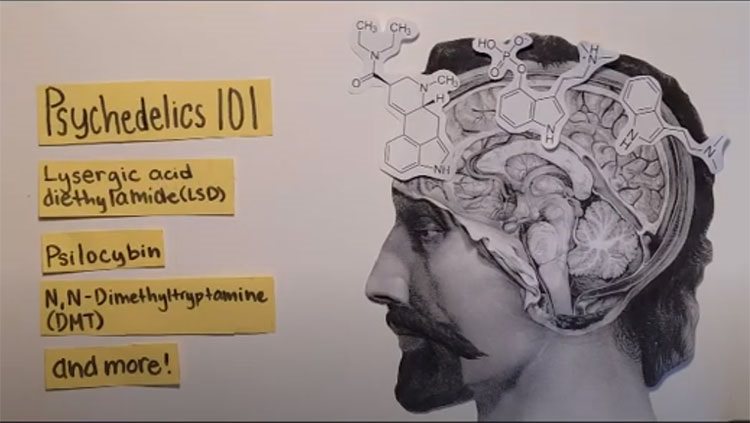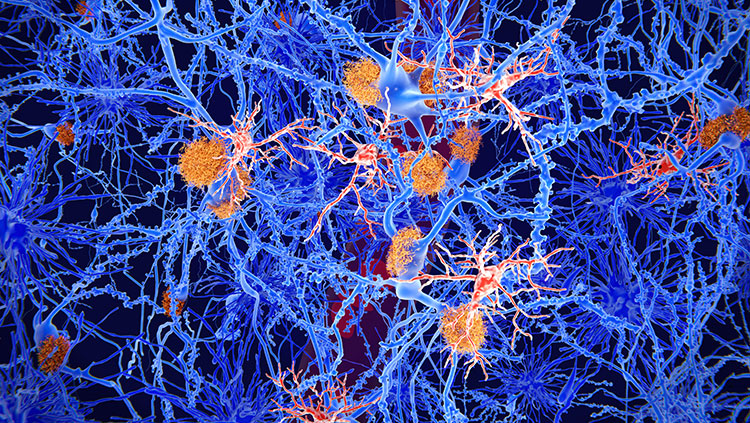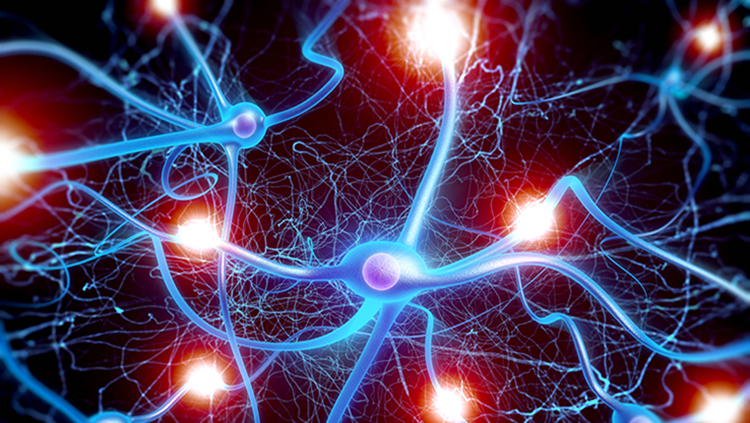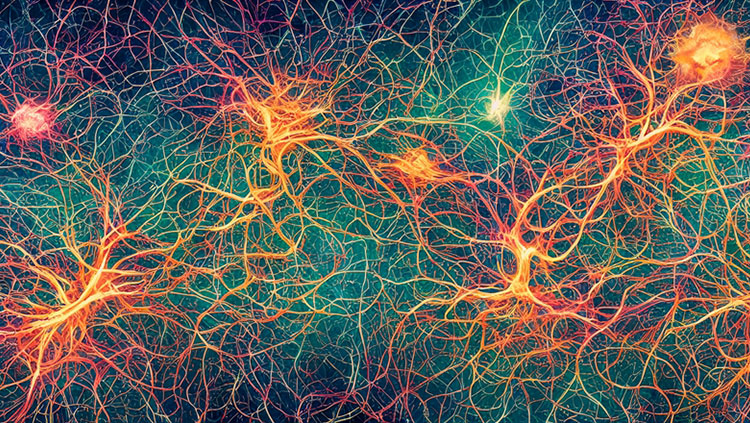Molecular Mechanisms of Alzheimer's
- Published6 Jan 2025
- Source BrainFacts/SfN
Although Alzheimer's disease is irreversible, several treatments can slow its progression if they’re started early enough. This means early diagnosis is crucial, but Alzheimer’s symptoms often only appear years after disease onset. Instead of solely relying on symptoms, experts say biomarkers — molecules or genes associated with a disease that can be measured in bodily fluids, often long before symptoms start — are a key diagnostic tool.
For Alzheimer’s disease, beta-amyloid plaques are a classic biomarker. But new research has identified other proteins that may be more accurate indicators of disease progression. Three candidates — tau, CRMP-2, and CDK5 — are all crucial in healthy brains for supporting neuron structure and forming new connections. But in Alzheimer’s disease, they malfunction, clump up, and wreak havoc. Identifying proteins like these provides new potential biomarkers that could help physicians more rapidly diagnose and treat their patients.
This is a video from the 2024 Brain Awareness Video Contest.
Created by Nandita Srikumar.
CONTENT PROVIDED BY
BrainFacts/SfN
Transcript
Alzheimer's disease — the most common form of dementia — is an irreversible and neurodegenerative disease.
This fatal brain disorder progressively destroys both the memory and thinking skills. And over time, the brain becomes more dysfunctional, unable to carry out the simplest tasks, leading to the death of many patients four to eight years after being diagnosed.
While Alzheimer's is an irreversible disease, it is imperative that we understand the key biomarkers of Alzheimer's disease to effectively conduct early diagnosis through biomarker assessment.
Although amyloid-b plaques are considered an important hallmark of Alzheimer's, new research presents the combination of a new trilogy of hallmarks: the tau, CRMP2, and CDK5 proteins.
Before delving into the role of these proteins in Alzheimer's, let's first understand their function in a healthy brain.
In a healthy human brain, the tau protein helps to stabilize the internal microtubules — the main component of the neuronal cytoskeleton — through promoting tubulin assembly. This helps to provide structure and support for the neuronal cells.
Collapsin response mediator protein 2, or also known as CRMP2 protein, performs a vital role in axonal guidance, neurite outgrowth, and microtubule stabilization during both the dural development and regeneration.
Finally, cyclin-dependent kinase 5, or also known as CDK5, plays a pivotal role in the nervous system. As a kinase, CDK5 is in charge of the various activities in the brain, including phosphorylating proteins and aiding in neurotransmission and synaptic communication.
Now that you're familiar with these proteins, let's explore how they contribute to the development of Alzheimer's disease.
To start off, the tau protein is severely hyperphosphorylated by the CDK5 kinase through the addition of multiple phosphate groups. This causes the tau protein to detach from microtubules and form insoluble structures.
The hyperphosphorylated tau not only loses its biological activity, but also promotes its polymerization through the formation of oligomers, due to its high affinity for other hyperphosphorylated tau proteins.
The fusing and lengthening of such oligomers eventually leads to the formation of neurofibrillary tangles, or also known as NFTs.
These tangles block the neuron's transport system, and thus impede synaptic communication. Over time, the inability of the neurons to transmit signals leads to memory loss and the loss of basic functions as the cells degrade from the toxicity of the NFTs.
Similar to the tau protein, CRMP2 protein is also hyperphosphorylated by the CDK5 kinase, causing the aggregation, or the misfolding, of the protein. This hyperphosphorylated CRMP2 often loses its ability to bind to tubulin and facilitate microtubule assembly.
In the long run, such hyperphosphorylation caused by the CDK5 kinase can lead to axonal degradation, directly contributing to Alzheimer's. In addition, hyperphosphorylation of CRMP2 can also accumulate through the formation of NFTs, which can lead to the loss of communication between neurons.
Since Alzheimer's is an irreversible disease, it is important to take preventive measures, one such being doing exercise. While there's no clear answer to how exercise directly helps to reduce the risk of Alzheimer's, research suggests that physical exercise can aid in decreasing the formation of NFTs.
Without the formation of NFTs, the functionality of the neurons and the synaptic communication within the brain significantly improves, thus helping to decrease the risk of developing Alzheimer's.
While Alzheimer's remains as an incurable disease today, it is crucial to understand its biomarkers and take preventive measures.
What to Read Next
Also In Alzheimer's & Dementia
Trending
Popular articles on BrainFacts.org


















